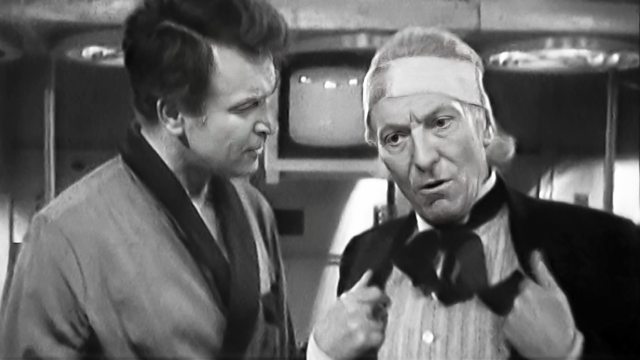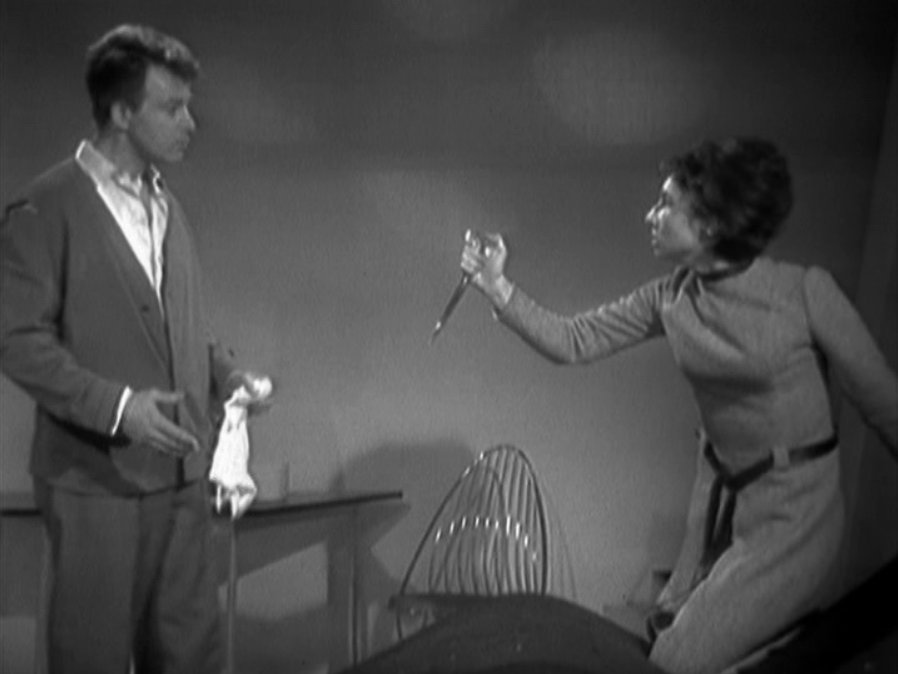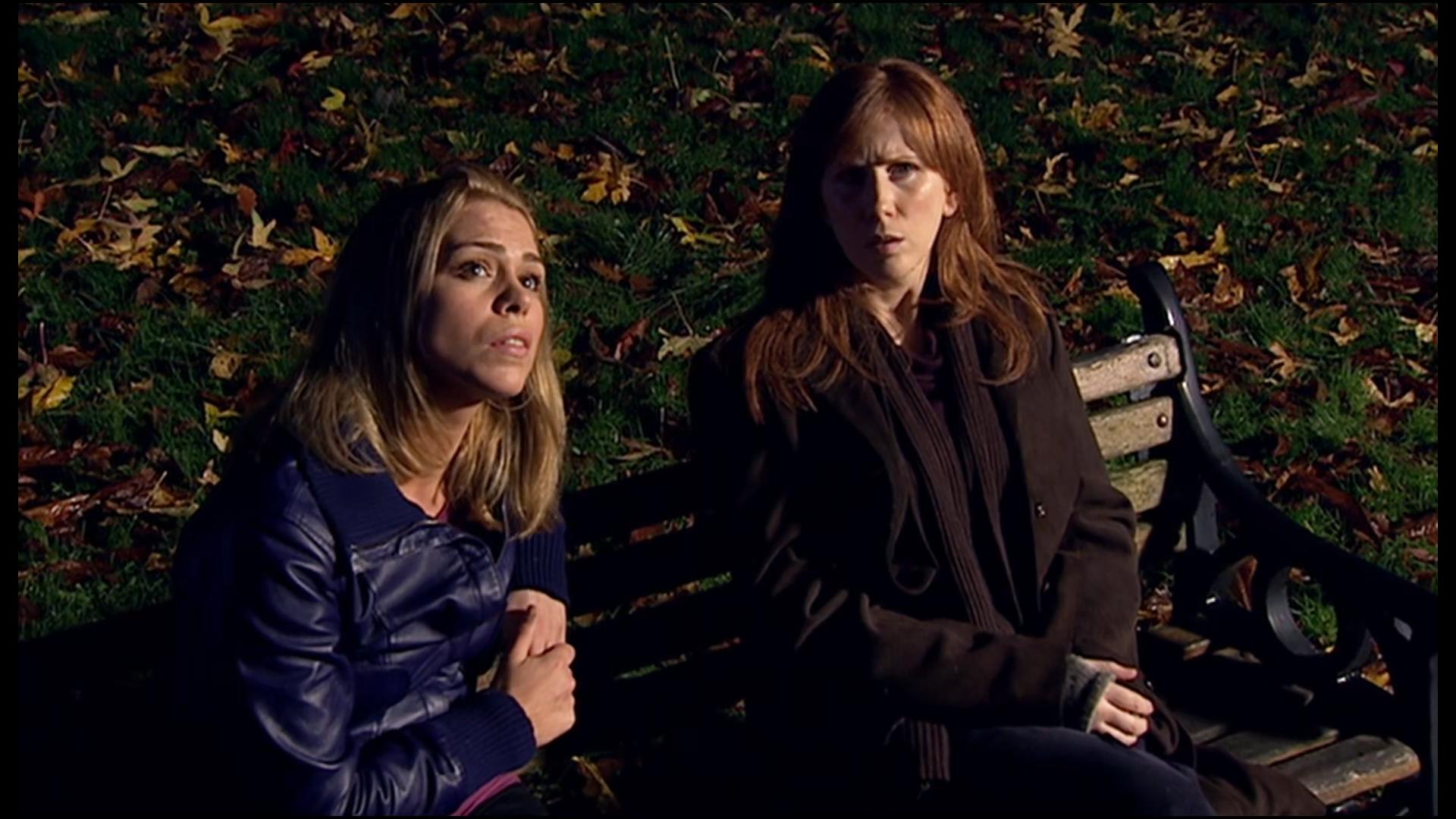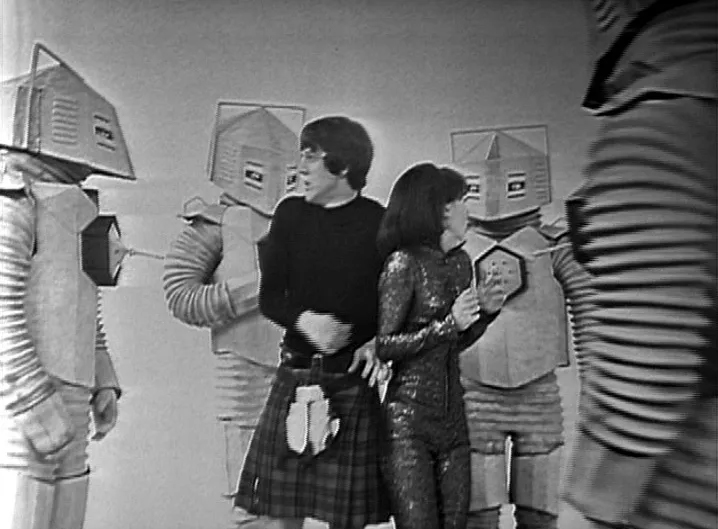Making a Doctor Who story can be an expensive business! But over the years, the show has found some ingenious cost-cutting solutions, and many of them have acted in the series’ favour. But which is the cheapest Doctor Who story of all time?

Without access to Doctor Who‘s balance sheets, pinning down the cheapest Doctor Who story of all time involves some guesswork. But it’s worth remembering that, across all television production, it’s common for shows to have ‘bottle episodes’ in their schedules. That is, episodes which feature the bare minimum of cast members and sets: often, the sets that are already standing, and the principal cast members.
And Doctor Who is no exception. In fact, the very first Doctor Who story that could be considered a bottle episode is ‘The Edge of Destruction,’ which was in William Hartnell’s first season. At this point in time, Doctor Who had only been commissioned for 13 weeks, and after the four part ‘An Unearthly Child’ and seven part ‘The Daleks,’ there were two outstanding episodes to fill – and they had to be made as cheaply as possible.
Indeed, all the production team had was the TARDIS set and the regular cast, and so writer David Whitaker decided to make a story out of these components. At the end of ‘The Daleks,’ the TARDIS is rocked by an explosion, and the travellers are rendered unconscious. As it turns out, something has gone badly wrong with the ship; it’s cloaked in darkness, and all of its systems have powered down. Worse, everyone has started to behave oddly, as if possessed. Has some mysterious entity found its way inside?
‘The Edge of Destruction’ is a cheap and simple affair, and possibly one of the strongest Doctor Who stories of William Hartnell’s era. It certainly doesn’t pull any punches; there is one particularly dramatic scene where the Doctor’s granddaughter Susan starts attacking a chair with a pair of scissors, while screaming.

And when the new series came around in 2005, it became common to have what became known as a ‘Doctor-lite’ Doctor Who story in each season, partly for budgetary reasons, but also to accommodate a tight production schedule.
There were two of these in Series Four. The main one was ‘Turn Left,’ which portrayed an alternate reality in which the Doctor had died. It showed what would happen to planet Earth if the Doctor wasn’t around to save it.

But this was followed by a ‘companion-lite’ Doctor Who story called ‘Midnight’ which, conceivably, was much cheaper, given that it largely consisted of one small set and a tight-knit cast. It’s all set on a tourist bus taking a journey across the poisoned diamond planet of Midnight. Half way through its journey, the rover breaks down, and there is something inside trying to get in. The monster eventually succeeds, but it’s invisible; it simply takes possession of one of the passengers.
It’s an atmospheric and incredibly gripping story, more akin to a piece of theatre than a TV show. ‘Midnight’ is a testament to just how powerful a Doctor Who story can be. It doesn’t need a huge cast or a Hollywood budget to be enjoyable. The power is in its characters and scripts.
And whilst we don’t know the exact cost of this particular Doctor Who story, it’s unlikely to be the cheapest of all time. That’s because there is one particular Doctor Who episode from 1968 which, quite literally, had no money whatsoever: ‘The Mind Robber,’ part one. And it’s brilliant.
Ironically, the success of ‘The Mind Robber’ actually stemmed from a production crisis. The preceding story ‘The Dominators’ was originally meant to be six episodes, but the production team felt that there wasn’t enough story to stretch it beyond five. However, ‘The Mind Robber’ was only four episodes long. They were effectively left with a one episode hole in the season, and they needed to fill it.

And so instead of trying to stretch ‘The Dominators’ out for another episode, they opted to extend ‘The Mind Robber.’ The problem was, they didn’t have a budget; they couldn’t build a whole roster of extra sets, and they couldn’t afford to rewrite ‘The Mind Robber’ in such a way as to incorporate its pre-existing environs. All they had was the TARDIS, and the regular cast.
The solution, therefore, was similar to ‘The Edge of Destruction.’ The episode focussed on the TARDIS team trying to figure out what was happening to their vessel, and where they had landed. All that lay beyond the TARDIS doors was a white, featureless void – and a small gaggle of robots, repurposed from another TV show Out of the Unknown.
It made for a very weird Doctor Who story, but succeeded because of the limitations imposed on it, rather than in spite of them. And whilst it wasn’t the longest Doctor Who story of all time (with many of the episodes under-running and episode five clocking in at an unprecedented 18 minutes) it stood the test of time. Indeed, when the Whoniverse launched the Tales of the TARDIS series to mark the 60th anniversary, ‘The Mind Robber’ was the story chosen to represent the Second Doctor.

(C) BBC
So is ‘The Mind Robber’ the cheapest Doctor Who story of all time? Its first episode, certainly, must be high on the list. But the definitive answer is probably ‘The Edge of Destruction,’ given that the entire story doesn’t feature anything other than the TARDIS and the four regulars.
But over to you, reader. What do you think is the cheapest Doctor Who story of all time? And is 1978’s ‘Underworld’ suddenly flashing before your eyes? Let me know in the comments below.










Leave a Reply